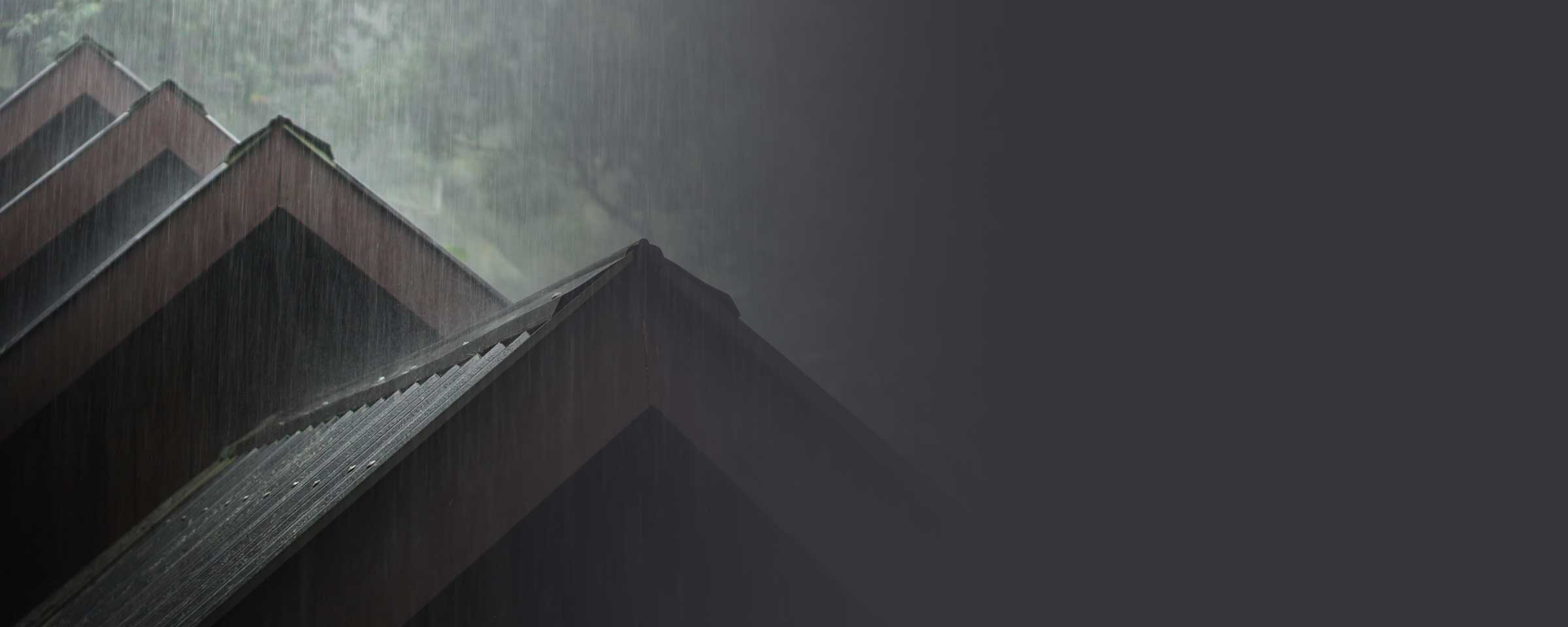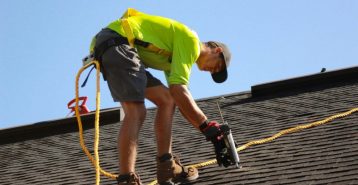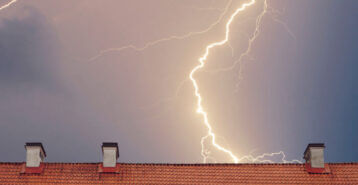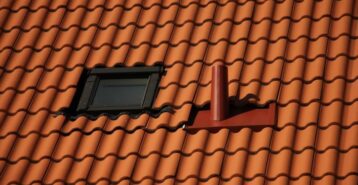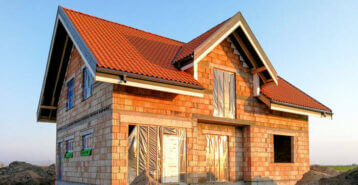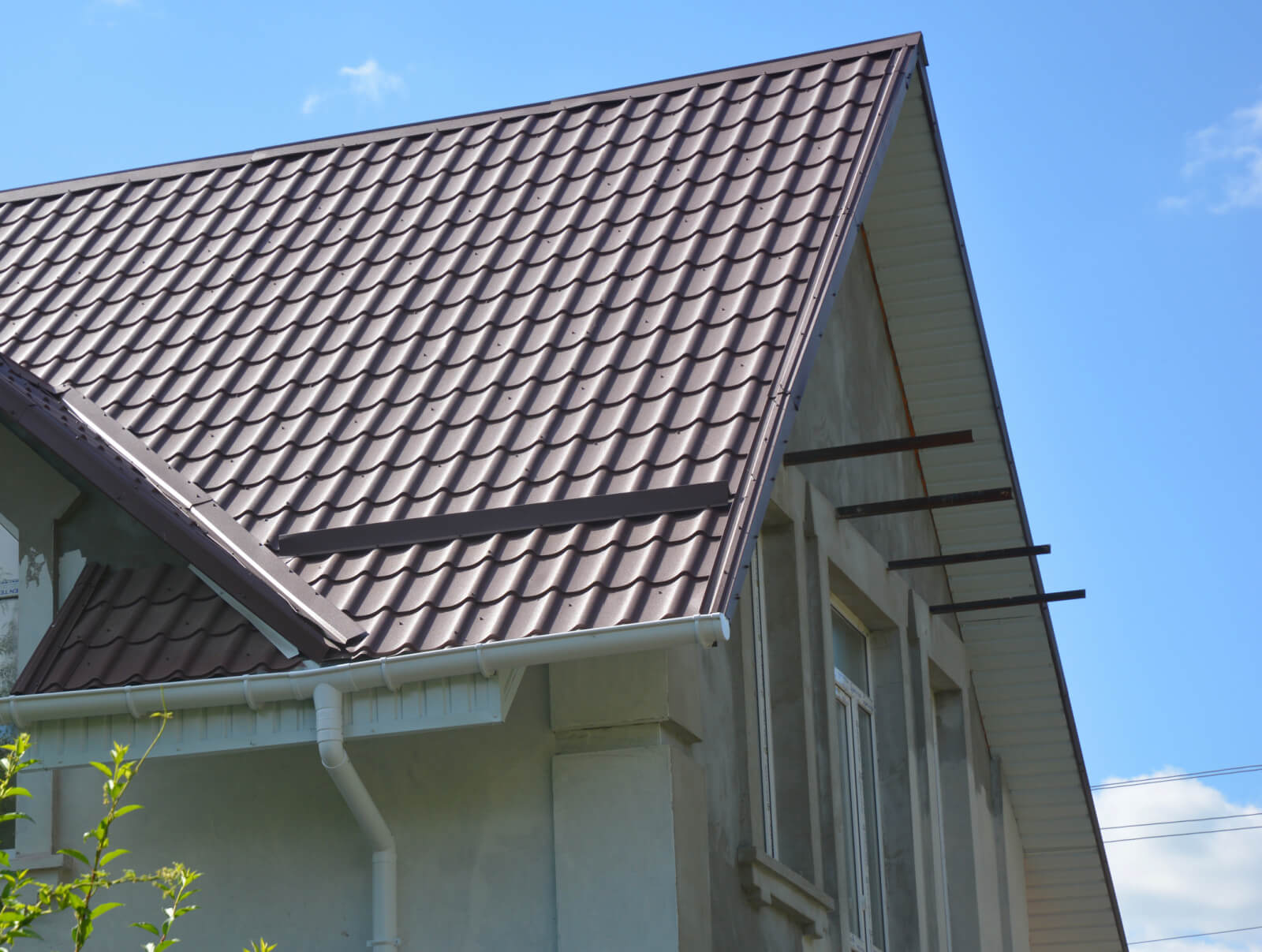Hail storms can bruise shingles, dent metal panels, and crack tiles—so when you start researching hail damage roof repair, it helps to know what “normal” costs look like before you call a pro. Prices vary with how widespread the damage is, your roof material, and local labor demand, especially after big storms. The good news: many small issues are fixable without a full replacement, and solid documentation speeds up insurance decisions.
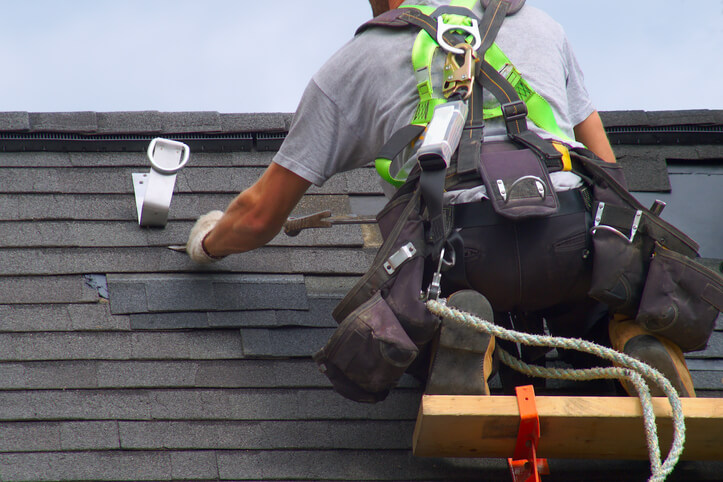
National Average Cost for Hail Damage Roof Repair
In 2025, most homeowners spend $1,500 to $8,000 on hail damage roof repair, with a national average around $4,250. Minor spot fixes, like replacing a handful of bruised asphalt shingles after quarter-size hail, can be $300–$1,500, while repairing multiple slopes, valleys, and flashing typically falls in the $3,000 to $9,000 range.
Costs can increase with premium roof materials (e.g., tile or slate), steep or complex roof styles, and add-ons like skylight or vent-stack replacements. Severe, widespread damage that may require a partial or full roof replacement can push totals closer to $8,000 to $25,000.
Factors that Impact Hail Damage Roof Repair Costs
Roof repair projects due to hail damage are not “one size fits all,” so it is important to understand the main factors that can contribute to your overall project cost.
Roof Material and Components
Some materials (slate, metal, tile) cost more to repair than asphalt. Accessories like flashing, vents, skylights, and valleys are labor-intensive and raise totals.
Size of the Damaged Area
Costs scale with the square footage that actually needs repair or replacement. Many roofing pros price by the “square” (100 sq. ft.).
Local Labor Rates
Professional roofer labor commonly runs $45 to $75 per hour nationwide, with higher rates in big metros and post-storm surges.
Inspection and Documentation
A paid inspection costs an average of $125 to $375 as of 2025 and confirms damage for insurance and scopes the work. Drone or infrared inspections usually cost more.
Location of the Damage
Ridges, penetrations (chimneys, skylights), steep pitches, and multi-story access increase complexity and time.
Hail Damage Roof Repair Costs by State
Roof repair costs vary widely by state because of local labor rates, material availability, building codes/permits, and post-storm demand surges. While hail is most common in “Hail Alley,” the Plains, and the Midwest, damaging hail can strike in any state.
Estimates below reflect typical hail damage repair cost ranges (not full replacements) for the average roof on a single-family home. Consider these costs “planning ranges” based on national cost data and regional labor/material patterns. Your quotes may differ after inspection and insurance review.
| State | Typical Range |
|---|---|
| AL | $1,500–$8,500 |
| AK | $2,300–$9,800 |
| AZ | $1,700–$8,800 |
| AR | $1,500–$8,500 |
| CA | $2,200–$9,500 |
| CO | $1,800–$9,000 |
| CT | $2,000–$9,200 |
| DE | $1,800–$8,800 |
| FL | $1,900–$9,000 |
| GA | $1,600–$8,600 |
| HI | $2,600–$10,200 |
| ID | $1,700–$8,700 |
| IL | $1,700–$8,800 |
| IN | $1,600–$8,700 |
| IA | $1,700–$8,900 |
| KS | $1,800–$9,000 |
| KY | $1,600–$8,600 |
| LA | $1,700–$8,900 |
| ME | $1,900–$9,000 |
| MD | $1,800–$8,900 |
| MA | $2,100–$9,400 |
| MI | $1,700–$8,800 |
| MN | $1,800–$9,000 |
| MS | $1,500–$8,500 |
| MO | $1,700–$8,900 |
| MT | $1,700–$8,800 |
| NE | $1,800–$9,000 |
| NV | $1,700–$8,800 |
| NH | $1,900–$9,000 |
| NJ | $2,000–$9,300 |
| NM | $1,600–$8,600 |
| NY | $2,100–$9,500 |
| NC | $1,700–$8,800 |
| ND | $1,800–$9,000 |
| OH | $1,700–$8,800 |
| OK | $1,800–$9,000 |
| OR | $2,000–$9,200 |
| PA | $1,800–$8,900 |
| RI | $2,000–$9,300 |
| SC | $1,700–$8,800 |
| SD | $1,800–$9,000 |
| TN | $1,600–$8,700 |
| TX | $1,800–$9,200 |
| UT | $1,600–$8,600 |
| VT | $1,900–$9,000 |
| VA | $1,700–$8,800 |
| WA | $2,000–$9,200 |
| WV | $1,600–$8,700 |
| WI | $1,700–$8,800 |
| WY | $1,800–$9,000 |
Even outside surge periods, higher claim volume means more adjuster traffic, longer lead times, and occasional material backorders. In practical terms, a mid-scope repair that might run $3,000 to $6,000 in a low-hail state can price closer to $3,500 to $8,000 in these hotspots. Full or partial replacements also tend to be triggered more often because impacts are widespread across multiple slopes. Expect noticeable differences by metro vs. rural areas, roof complexity, and whether code upgrades (ice & water shield, ventilation) are required.
Hail Alley
Front Range Colorado, western Nebraska, and southeastern Wyoming typically see the highest hail frequency. Baseline repair pricing here often trends 5% to 15% higher than the national average in quiet periods and 20% to 40% higher immediately after a large storm due to demand and material scarcity.
Typical localized repairs land around $1,800 to $9,000 in these regions, depending on material and slope count. Minor fixes can still be a few hundred dollars, while widespread shingle or tile damage can push toward $9,500 to $24,000+ for partial/full roof replacement. Complex, high-elevation roofs and Denver-area labor rates often sit at the top of the range.
Plains States
Kansas, Oklahoma, Nebraska, South Dakota, North Dakota, Iowa, Missouri, and Texas generally have competitive labor outside storm surges, so baseline repair costs often track closer to national norms—roughly $1,600 to $8,900 for localized work.
The catch is frequency: when multiple towns are hit by hail the same week, you’ll see short-term price jumps and longer wait times. Rural jobs may add $150 to $500 for travel/mobilization, while big metros (Dallas–Fort Worth, Oklahoma City, and Wichita) can carry 10% to 20% labor premiums.
Because hail swaths here are large, it’s more common for insurers and contractors to recommend section or full replacements, pushing totals into the $9,000 to $20,000 range when decking or underlayment is compromised.
MidWest
Minnesota, Wisconsin, Illinois, Indiana, Michigan, and Ohio experience clustered wind and hail seasons plus cold-weather constraints. Baseline localized repairs typically run $1,700 to $9,200, with urban premiums (Chicago and Minneapolis) of ~10% to 25% compared with nearby suburbs.
Seasonality matters: in late fall and early spring, crews may need cold-weather materials, extra setup, or a follow-up visit when it warms up—so labor can cost more. Repairs on tile, slate, or complex architectural asphalt also tend to be pricier. Because storms often damage roofs, gutters, and siding at the same time, hiring one crew to do it all can reduce repeat trip and setup fees even if some line items look higher.
Cost by Size of Damaged Area
For roof repairs, professionals typically price by the damaged area, not the whole footprint. Most hail damage roof repair jobs replace 1 to 6 squares (100–600 sq. ft.) of material. The expected cost ranges below assume localized hail repairs, not full tear-offs, and scale with how much of the surface is actually affected.
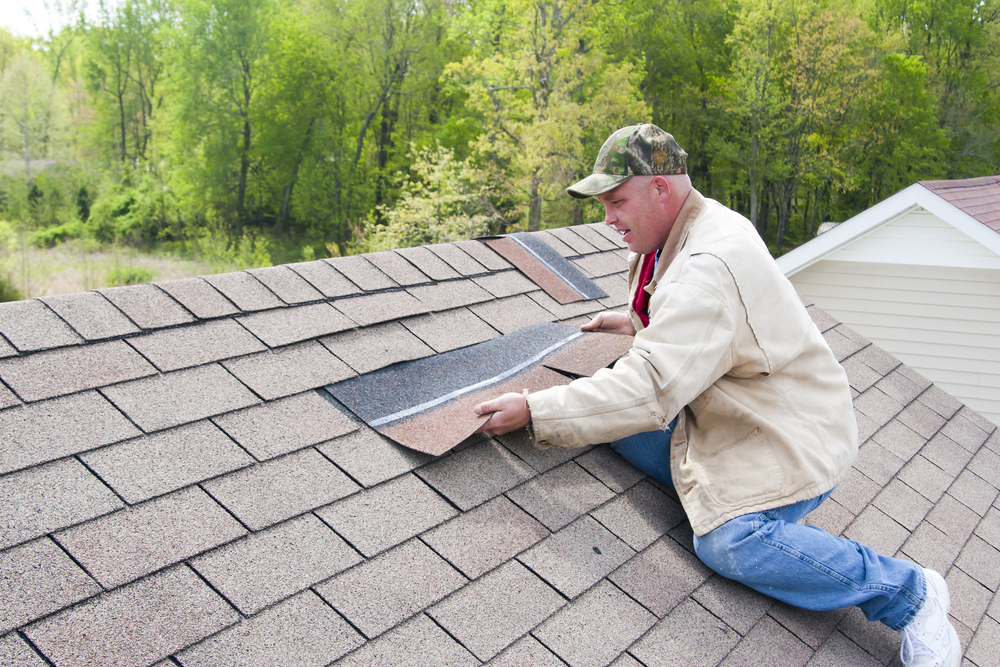
1 Square (100 Square Feet)
Repairing 1 square (1oo sq. ft.) of roofing following hail damage typically costs $350 to $1,200. Patching asphalt on a single-story slope will fall at the lower end of the range, usually $350 to $700. To repair metal or tile or work around a ridge/valley, the cost can go up 20% to 50%. Add $150 to $400 if staging or steep-pitch safety rails are required.
2 to 3 Squares (200 to 300 Square Feet)
Repairing 2 to 3 squares (200 to 300 square feet) of roofing following hail damage typically costs $700 to $3,600+ for asphalt and closer to $1,400 to $6,000 for premium materials.
This scope of repair is common for storms that bruise multiple areas of the roof. Expect extra line items on your quote if flashing, vent, or skylight damage is involved. Second-story access or difficult-to-access areas can also cause higher labor costs.
4 to 6 Squares (400 to 600 Square Feet)
To repair a larger 400 to 600 square foot area damaged by hail, the expected cost is closer to $1,400 to $6,000 for asphalt and $2,800 to $12,000 for premium materials.
At this size you’re often repairing several slopes and penetrations. Complex roof layouts or higher-end materials frequently price 1.3×–2× more than architectural asphalt.
7 to 10 Squares (700 to 1,000 Square Feet)
A roof repair involving up to 1,000 square feet tyically starts at $2,800 and can run as high as $7,000 for asphalt, with premium materials ranging from $5,600 to $14,000.
A repair of this scope borders on partial replacement, especially if underlayment and decking is wet or brittle. If 25% to 40% of surfaces are impacted, contractors and insurers may recommend a full replacement.
Cost by Roof Material
Material matters when it comes to the cost of a roof repair. Even for the same damaged area, hail damage roof repair costs change based on what your roof is made of and how hard the spots are to reach.
The ranges below assume localized repairs (not full tear-offs) and scale with more square footage affected. Asphalt is usually the most affordable, whereas metal, tile, slate, and complex roof styles raise prices.
Asphalt Shingles (3-Tab & Architectural)
The typical cost range to repair an asphalt roof after hail damage is $350 to $1,200 per square. Asphalt is the most common and budget-friendly material to repair.
Light bruising or a few cracked tabs on single-story slopes often land at the low end ($350 to $700 per square). Prices can rise with multiple slopes, valleys, or penetrations (chimneys, vents, skylights). Matching shingle style or color and steeper pitches add labor costs.
Metal Panels
To repair a metal roof after hail damage, the average cost is closer to $700 to $2,000 per square. Cosmetic dents may not need repair (or may be excluded by insurance), but punctures, seam damage, or flashing issues usually do require repair. Standing-seam panels and custom flashing can drive costs higher than exposed-fastener systems. Complex eave and valley work and second-story access add time.
Tile Roofing
Repairing a tile roof due to hail damage usually starts at $900 and go up to $2,400 per square or more. Replacing cracked tiles is labor-intensive, and matching profiles and colors can be tricky. Expect higher rates for steep roofs, underlayment repairs, or when valleys and hips require careful staging. Breakage during handling is a contingency some contractors include.
Slate Roofing
For slate roofing, expect repair costs to start at $500 and go up to $3,000 per square. Slate repairs require specialty skills and careful handling. Older slate can be brittle, and copper nails and flashings may need upgrades to meet current standards. Access, height, and complex patterns can push labor costs up. Small, precise patches can still take a full day for a skilled crew.
Wood Shakes/Shingles
Repairing wood shakes or shingles after hail damage typically costs $500 to $1,200 per square. Wood can split or crush under impact, and repairs often include underlayment fixes and careful blending to match weathered color. Expect added costs if fire-resistant underlay or ventilation upgrades are required by code.
Additional Costs to Consider
Labor Costs
Be sure to budget for $45 to $75 per hour for roofers, with a typical crew of 2 to 5 people depending on safety needs and speed. Most companies have a minimum service charge and mobilization fee to cover setup, tear-down, and travel. After big hail events, short-term surge pricing and longer wait times are common. Weekend and emergency calls can carry after-hours premiums.
Inspection Fees
Professional roof inspections usually run $125 to $375, with drone or infrared (IR) scans costing more. A quality inspection should include photos of bruising and cracks, a sketch noting slopes and penetrations, and a written scope. Many contractors credit the fee back if you hire them for repairs, but third-party inspectors typically do not. Adjuster inspections are separate and scheduled through your insurer.
Location of Damage
Where the hail hits matters. Repairs on ridges, valleys, around chimneys, skylights, or solar mounts require more cutting, flashing, and time. Steep or high roofs and second-story access often add costs for staging (scaffolds, safety rails, ladder hoists) and may trigger a steep-pitch premium. Expect quotes to reflect the number of penetrations and the complexity of the layout, not just the square footage.
Optional Add-ons to Prevent Future Damage
When you are having your roof repaired after a hail storm, upgrades can reduce future risk and sometimes lower premiums, but they add to the invoice.
- Class 4 impact-resistant shingles: Often eligible for insurance credits where offered. Upgrades typically add $30 to $75 per square for materials, plus labor. Keep the manufacturer documentation for your insurer.
- Ice and water shield (valleys/edges): A self-sealing membrane that helps prevent leaks from wind-driven rain and ice dams. This commonly costs $50 to $90 per square for materials, plus installation time.
- Upgraded flashing and storm-rated vents: New step/valley flashing, heavier-gauge metal, and wind-rated vents can reduce leak points. Budget $200 to $800+ depending on count and complexity.
- Gutter guards and larger downspouts: Help move hail and heavy runoff quickly. Gutter guards run $5 to $12 per linear ft., and upsizing downspouts is typically $100 to $300 each.
Will Insurance Cover Hail Damage?
Insurance usually covers roof damage due to hail. Hail is a named peril in most standard homeowner insruance policies, but coverage details vary:
-
Separate wind and hail deductibles (often 1% to 2% of dwelling coverage) are common in hail-heavy states (e.g., parts of TX, OK, KS, CO, MO, IL).
-
Cosmetic damage exclusions (especially for metal roofs) may apply. Insurers can deny claims if dents do not impair roof function. Texas specifically allows an HO-145 cosmetic hail exclusion endorsement in certain situations.
-
State guidance (e.g., Oklahoma Insurance Department) confirms hail is typically covered but notes policies may include restrictions and higher deductibles.
Tips for Saving on Roof Hail Damage
-
Document immediately: Be sure to take photos and/or videos, record the date and time, and save fallen hailstones for size reference if possible.
-
Protect from further damage: Use tarps for leak control and keep receipts (often reimbursable).
-
Get multiple bids: Requesting quotes from 3 to 4 local contractors allows you to make apples-to-apples comparisons for the cost of the project.
-
Use a paid inspection: Independent documentation can streamline claims and prevent unnecessary replacements.
-
Ask about Class 4 upgrades and discounts: For long-term savings, insurance benefits, and preventing future repairs, consider upgrading to impact-resistant roofing.
-
Schedule smart: If safe to wait, booking after a post-storm rush can avoid surge pricing.
-
Clarify your deductible and exclusions: Discuss your insurance policy with your provider to better understand your wind/hail percentage deductibles and any cosmetic damage language.
-
Bundle related fixes: Combine gutter, flashing, and vent work to avoid having multiple contractors work on your home.
Compare top-rated roofing pros in your area.
Read real homeowner reviews, explore qualifications, and view promotions. Modernize makes it easy to browse professionals and find one that will be perfect for your project.






